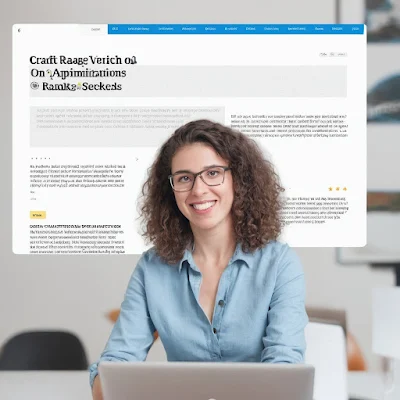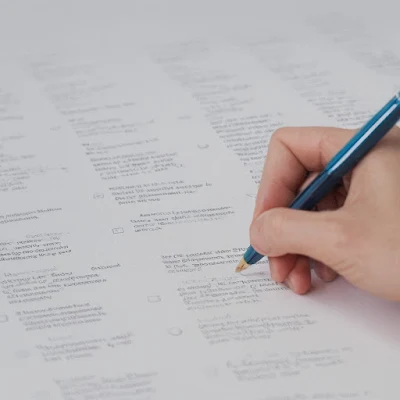 |
| On-Page Optimization Craft Content |
Mastering On-Page Optimization Craft Content That Ranks And Resonates
Welcome, fellow wordsmiths and digital denizens! Are you yearning to propel your website to the top of search engine results pages (SERPs)? Then buckle up, for we're diving into the captivating world of on-page optimization. It's the art of crafting content that not only resonates with your audience but also charms those all-powerful search engine algorithms. Fear not, for this intricate dance isn't just for technical gurus; anyone with a passion for language and a strategic mind can master its steps.
On-page optimization, often abbreviated as on-page SEO, focuses on fine-tuning the individual elements of your web pages to improve their visibility and ranking for relevant search queries. Think of it as meticulously polishing your digital storefront, ensuring it not only catches the eye but also guides shoppers seamlessly to the products they desire (your valuable content!).
Why is on-page optimization so crucial? Imagine crafting a masterpiece of an article, only for it to languish in the depths of the internet, unseen by your intended audience. On-page SEO bridges that gap, acting as the friendly map that leads search engines and users directly to your doorstep. Let's delve into the key areas where you can weave your SEO magic:
 |
| On-Page Optimization Craft Content |
1. Content is King (and Queen, and Jester):
It all starts with the heart of your website – the content itself. Remember, you're writing for both humans and search engines, so strike a harmonious balance. Aim for:
- Informative and Engaging: Provide value to your readers. Address their pain points, answer their questions, and offer unique insights. Let your passion for the topic shine through!
- Relevant Keywords: Don't forget the technical side. Strategically sprinkle relevant keywords throughout your content, but avoid keyword stuffing – it reads unnaturally and can even harm your ranking.
- Structure and Formatting: Break up your text with headings, subheadings, and bullet points for readability. Optimize paragraph lengths and use visuals like images and infographics to keep your audience engaged.
2. Title Tags and Meta Descriptions: The Captivating First Impression:
Think of your title tags and meta descriptions as your website's shop window display. They entice users to click and give search engines a sneak peek of your content's value. Ensure:
- Clear and Concise: Keep it short and sweet, yet informative. Title tags should be around 60 characters, and meta descriptions around 160, to avoid truncation in search results.
- Keyword-Rich: Include relevant keywords naturally but prioritize clarity and user appeal.
- Unique and Compelling: Craft titles and descriptions that stand out and pique the reader's curiosity.
3. Headings and Subheadings: Signposts that Guide the Way:
Headings and subheadings act as signposts within your content, guiding readers and search engines through its structure. Here's how to use them effectively:
- Hierarchy: Employ clear heading hierarchies (H1 for main titles, H2 for subheadings, etc.).
- Keyword Integration: Include relevant keywords naturally within headings and subheadings.
- Descriptive and Engaging: Make them informative and pique the reader's interest in each section.

On-Page Optimization Craft Content
4. Internal Linking: Weaving a Seamless Web:
Internal linking connects different pages on your website, creating a user-friendly and SEO-friendly web. Consider:
- Relevance: Link to relevant pages with similar topics or complementary information.
- Anchor Text: Choose descriptive anchor text that reflects the linked page's content.
- Strategic Placement: Link naturally within the content flow, not just at the bottom.
5. Image Optimization: More Than Just Pretty Pictures:
Images can significantly enhance your content and SEO. Remember:
- Descriptive File Names: Use relevant keywords in your image file names.
- Alt Text: Provide clear and descriptive alt text for each image, aiding accessibility and SEO.
- Optimize Image Size: Resize images for faster loading times, ensuring a smooth user experience.
6. Mobile-Friendliness: Catering to the Smartphone Generation:
With mobile searches surging, having a mobile-friendly website is no longer optional, it's essential. Ensure your website renders flawlessly on all devices, including smartphones and tablets. Tools like Google's Mobile-Friendly Test can help you check.
7. Technical SEO: The Underlying Foundation:
On-page optimization goes beyond visible content. Technical aspects like website speed, structured data markup, and URL structure also play a role. While often tackled by developers, some basic understanding can be helpful. Consult resources like Google's Search Console for guidance.
 |
| On-Page Optimization Craft Content |


